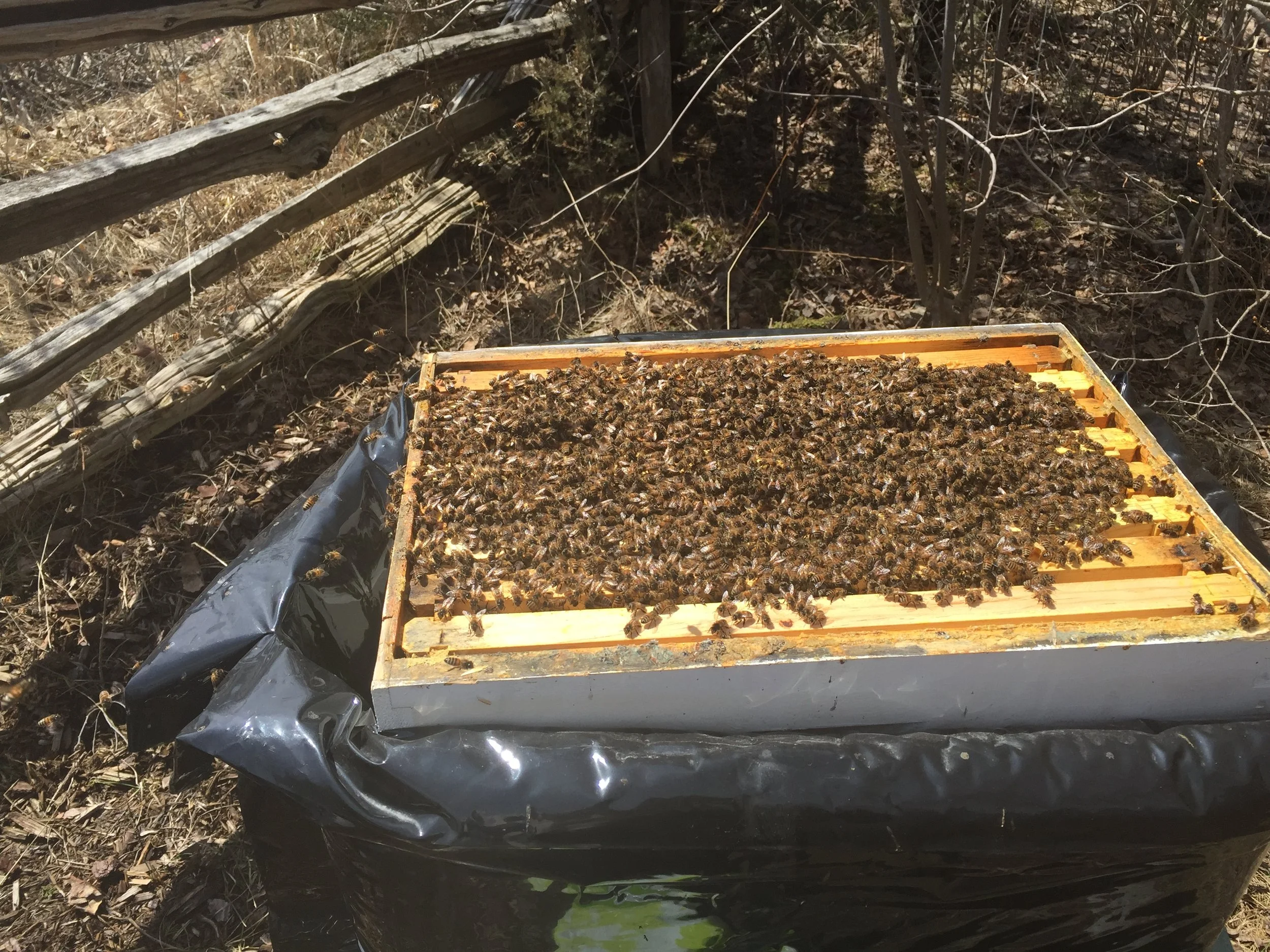Lilacs out of the dead land, mixing/Memory and desire, stirring/ Dull roots with spring rain. T.S. Elliot
I look forward to the first inspection all winter. I think about my bees, huddled in their hives, eating honey and telling stories, and I can't wait to open them up and support their (I imagine) delirious early foraging.
The reality is somewhat different. Today I had to admit to myself that I don't really like these first inspections. Sure, peeking in when I unwrap to see that there's brood and good population is wonderful, but the 'full meal deal' of inspections isn't so much fun. For one thing, the results of winter stress are obvious, and as well, my own shortcomings as a beekeeper are in relief. Yes, I know bees die over the winter, but it's worrying and demoralizing when they are piled on the bottom board. Or as with one of my hives, a damp mouldering pile on the hive 'stoop'. Really?
And then there's the mouldy frames. Didn't I ensure enough circulation? Are those wax moth eggs? Should I still reverse the supers and let the bees clean the messy frames up or trash the comb? Are those few brown steaks on the front of the hive nosema or just a little winter dysentery? Is that queen laying spottily or is that just an early spring brood pattern? Is that queen cup a sign of impending swarming or a leftover from last year? Is that robbing or just foragers pissed at the intrusion?
This time of year what I don't know seems to outweigh what I know. Then of course, I lose confidence and begin second-guessing what I do know. And the day didn't start out well in any event. I woke up to find a tick burrowing into my shoulder, a reminder that I live in a Lyme-prone area and need to pay attention to that, too.
But what I do know is this: only one of my 26 hives is a deadout. I have a few questionable queens, but the others are rallying to spring. I remind myself that my microclimate is weeks behind other beekeepers in Ontario; even the rest of The County is a week ahead. (I can tell by the lilacs.) Just today I saw the first apple blossoms on our property, so it's still early in the season for my folks. But they are working hard. Their legs are weighed down with multicoloured pollen, and others are landing hard, loaded with nectar. In fact I had to cut my inspections short in a number of hives because when I pulled out the frames they were dripping with nectar and I was worried about the bees getting wet. And about robbing. They were sweet with me, though: no gloves (me) and no stinging (them), so that's a good sign.
So maybe I need to take my own advice and trust my bees. And myself. But at the same time, learn. What I learned this year: 1) I didn't leave enough honey. If another drought occurs like last year, I won't do a second harvest in August. Because I don't feed my bees in fall or spring, I have to be rigorous about ensuring their stores are adequate, and even the ones that survived were very low in stores. 2) I need to pay more attention to the winter wrap and make sure that both the bottom and top are open for circulation. I will be more mindful about adding a popsicle stick under the inner cover for air.
Coming up: a hot bath, followed by a nice shrimp and mango stir fry. Ross will fill me in on any new craziness from my country of origin to the south and we'll toast our good luck at living in Canada with a cold glass of Ontario Riesling.

